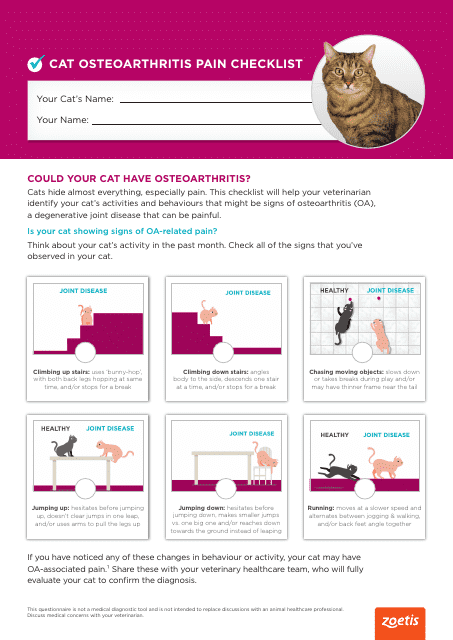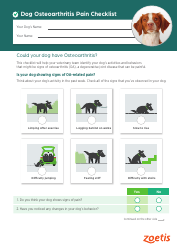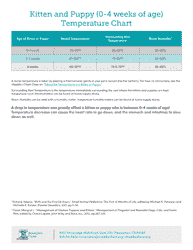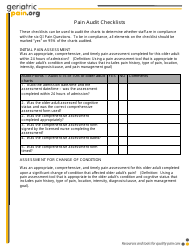Cat Osteoarthritis Pain Checklist
The Cat Osteoarthritis Pain Checklist is a document designed to help cat owners and veterinarians identify signs of osteoarthritis in cats. It consists of a series of questions about a cat's physical health and behavior, which could reveal symptoms related to the chronic joint disease. It includes questions about changes in the cat's mobility, activity level, grooming habits, playing behavior, and reactions to being touched. The purpose of this checklist is to detect osteoarthritis early, so that it can be managed effectively and the cat's quality of life can be maintained or improved.
The Cat Osteoarthritis Pain Checklist is typically filed by a veterinarian or a pet owner when observing symptoms of Osteoarthritis in cats. It's a comprehensive document that helps to keep track of potential signs of pain and discomfort related to Osteoarthritis in cats. This form may be used as a communication tool between the pet owner and veterinarian, helping them recognize and monitor symptoms over time.
FAQ
Q: What is cat osteoarthritis?
A: Cat osteoarthritis is a progressive, degenerative disease that affects the joints in cats. It involves the gradual destruction of the cartilage that cushions the joints, leading to pain and reduced mobility.
Q: What are the symptoms of cat osteoarthritis?
A: Major symptoms of cat osteoarthritis can include decreased activity, difficulty jumping or climbing stairs, stiffness, limping, altered gait, weight gain due to less activity, and behavioral changes such as increased aggression.
Q: What are the causes of osteoarthritis in cats?
A: While the exact causes of osteoarthritis in cats are not completely understood, it is thought to be due to wear and tear on the joints over time. Factors such as cat's age, weight, and prior injuries can play a role.
Q: How is cat osteoarthritis diagnosed?
A: Osteoarthritis in cats is typically diagnosed through a combination of physical examination and X-rays. The vet will look for signs of pain or discomfort during the examination and X-rays can confirm any changes in the cat's joints.
Q: Is there a cure for cat osteoarthritis?
A: While there is no confirmed cure for cat osteoarthritis, the condition can be managed. Treatment often involves managing pain and inflammation, maintaining a healthy weight, and modifying the cat's environment to minimize stress on affected joints. In some cases, surgical intervention might be needed.
Q: How to prevent osteoarthritis in cats?
A: Preventing cat osteoarthritis involves maintaining a healthy weight for your cat, providing a balanced diet, regular exercise, and regular check-ups to the vet to detect early signs. However, some factors such as age and underlying health conditions are not preventable.
Q: Can osteoarthritis in cats be painful?
A: Yes, osteoarthritis in cats can be painful. As the condition involves the degeneration of the cushioning cartilage in the joints, it can lead to inflammation and discomfort.
Q: Can cats live with osteoarthritis?
A: Yes, cats can live with osteoarthritis. With appropriate management strategies in place, including pain management, diet control, and necessary environmental changes, a cat with osteoarthritis can still lead a good quality life.
















